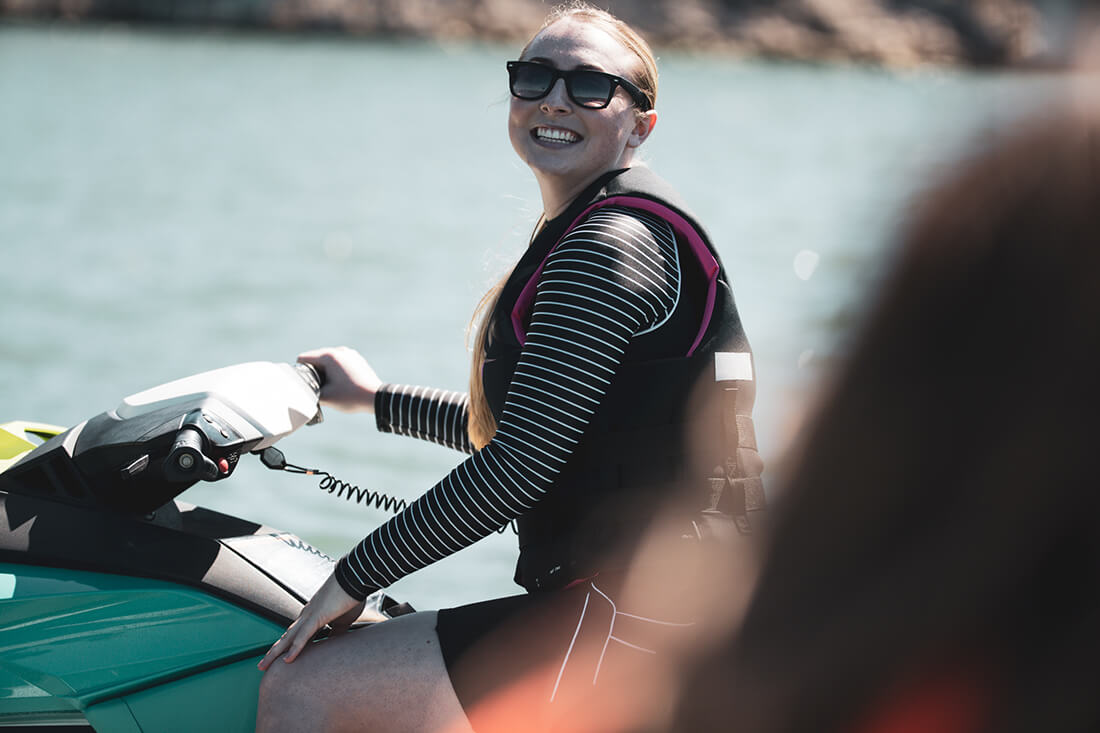Personal Watercraft Safety: Essential Tips for Every PWC Rider

Riding a personal watercraft (PWC) can be exhilarating, but it comes with responsibilities. Safety should always be your top priority. Here are essential tips for every PWC rider:
-
Wear Proper Safety Gear
Always wear a U.S. Coast Guard-approved life jacket and eye protection. Consider gloves and protective footwear for better control and comfort. -
Know Your PWC
Read the owner’s manual to understand your craft’s handling, capacity, and limitations. Never exceed the maximum number of passengers. -
Stay Alert and Avoid Distractions
Always keep your eyes on the water ahead. Assign someone else on board to watch for swimmers, boats, or obstacles if possible. -
Follow Local Boating Laws
Each province or state has specific rules for PWC operation. In Canada, for example, operators must carry a Pleasure Craft Operator Card. -
Maintain Safe Distances
Keep at least 30 meters (100 feet) away from other vessels, swimmers, and shorelines. Avoid reckless maneuvers near crowded areas. -
Ride Sober
Never operate a PWC under the influence of alcohol or drugs. Impairment significantly increases the risk of accidents. -
Check Weather and Water Conditions
Strong winds, waves, and currents can make PWC operation dangerous. Always check forecasts and avoid risky conditions. -
Learn How to Handle Emergencies
Know how to stop the engine, handle falls, and reboard safely. Practice turning, stopping, and recovering from sudden obstacles in a controlled environment. -
Perform Regular Maintenance
Inspect your PWC for fuel leaks, worn parts, and proper functioning before each ride. Regular maintenance prevents mechanical failures. -
Respect the Environment
Avoid disturbing wildlife, maintain a safe distance from shorelines, and follow “no-wake” zones to protect ecosystems.

Here's a Personal Watercraft (PWC) Safety Checklist to help ensure you're ready.
Before You Ride:
-
Life jacket on (USCG-approved)
-
Eye protection, gloves, and protective footwear
-
Review PWC manual & check passenger limits
-
Fuel and engine check complete
-
Weather and water conditions safe
On the Water:
-
Boating license on hand
-
Maintain safe distance from other vessels, swimmers, and shorelines
-
Avoid reckless maneuvers
-
Stay sober—no alcohol or drugs
-
Assign someone on board to watch for obstacles and hazards
Emergency Preparedness:
-
Know how to stop the engine quickly
-
Practice falling off and reboarding safely
-
Familiar with emergency signals and communication
Maintenance & Environment:
-
Regularly inspect engine, hull, and safety equipment
-
Respect wildlife and “no-wake” zones
